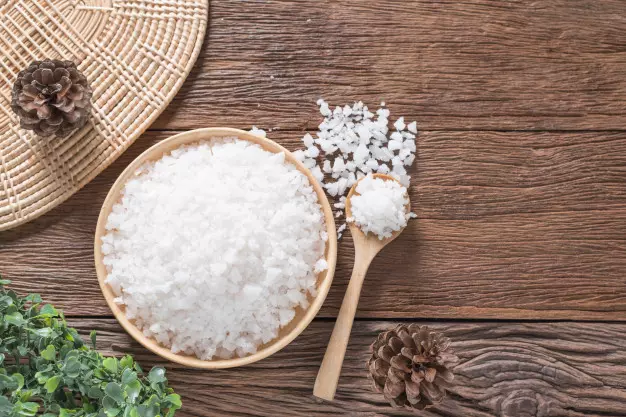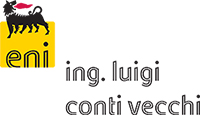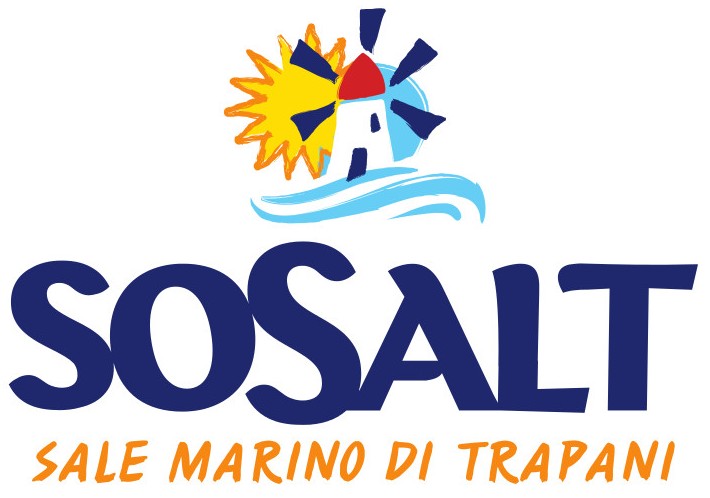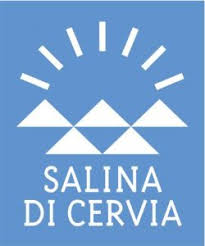Summary
Since 2020, the global salt market has been experiencing growth despite a decrease in production due to the pandemic. Global market projections indicate an increase from $35.84 billion in 2024 to $54.02 billion by 2032. European food salt production saw fluctuations, with a significant jump to 2,600 thousand tons in 2022, representing a 13.5 percent increase from 2018. The Italian market reflects these trends, with the turnover of seasoning and spice companies growing by 17.2 percent over five years to 2021 and the turnover of salt mining companies increasing by 16.9 percent from 2012 to 2022. Sold production of food salt in Italy also showed a notable climb, with a 46.4 percent increase in value from 2018 to 2022. The Italian market is oligopolistic with Italkali, Atisale SPA, and Locatelli Saline Di Volterra Srl dominating, and a consolidation trend is evident, characterized by the disappearance of small companies and a stabilization in the number of employees since 2015. The main salt-producing regions in Italy include Sicily and Puglia. Consumer prices have risen by 10.9 percent from 2016 to 2023, with a substantial 5.3 percent increase between 2022 and 2023. Government and WHO efforts to reduce salt consumption are ongoing, considering the health implications of high intake, and the Italian market features a variety of salt products catering to different consumer needs and health considerations.
Evolving Dynamics and Consumer Caution Manifest in Italy’s Salt Market
The Italian salt market exhibits a diverse landscape characterized by both rock and sea salt production, with various types responding to dissimilar needs from its consumers. Consumption trends in Italy have showcased a conscious shift, with approximately 75% of Italians over the age of 15 becoming more vigilant about their salt intake as reported in 2022. This heightened awareness, influenced by health recommendations and governmental efforts, has translated into a decrease in overall consumption by 12% over a decade. The average monthly household expenditure on salt, including spices and herbs, remained fairly consistent over a five-year period, with a notable dip in 2021. However, production of sold food salt peaked in 2017 and experienced fluctuations since, revealing underlying instabilities within the sector. Over a decade, the trend presented an overall drop of 6.4% from 2013 to 2022. International trade seems positive for the Italian salt sector, as imports grew by approximately 22.6%, while exports outpaced this figure with an increase of roughly 43.5%. Special attention is given to the country's export relationship with the United States, which absorbs about a quarter of Italy's total salt exports. The types of salt available reflect the varied consumer preferences and industry innovations. Traditional sea salt remains a staple, while iodized salt answers public health calls for iodine sufficiency. Whole salts and Himalayan pink salts cater to the demographic seeking minimally processed options. Aromatic salts infuse culinary experiences with distinct flavors and low-sodium alternatives satisfy health-conscious clientele. Manufacturers are increasingly adopting sustainable methods and materials, with more than half of them achieving environmental certifications. The Italian salt market, therefore, is witnessing a transformative era where consumer caution, environmental awareness, and diverse product offerings are shaping the industry's present and future. With attention to health implications, eco-conscious packaging, and a rise in exports, Italy’s salt market appears to be adapting well to the new tides of demand.
Key Players Shaping the Italian Salt Market Landscape
Italy's salt industry is characterized by a diverse array of companies that span from traditional sea salt providers to innovative leaders in specialized and sustainable salt products. Here's an overview of some the major companies leading the Italian market, more are available in the full study:
Italkali: Dominating the market with rock salt, Italkali offers a variety of salts for industrial and food use. They are known for their mining operations in Sicily, producing vast quantities of rock salt that cater to different market segments including food, industrial applications, and animal feed. They also provide flavored options that enhance the culinary experience.
Ingegneria Luigi Conti Vecchi: Renowned for their sea salt, this entity has a historical significance in the industry and provides salts for both food consumption and industrial use. Their offerings include salt for animal feed, emphasizing their versatility and comprehensive approach to salt mining and production.
Atisale: With a focus on sea salt, Atisale caters to both the industrial sector and the culinary needs of consumers. They also produce salt-based household products, demonstrating their adaptability and innovation within the market. Aided by strategic locations near the coast, Atisale efficiently harvests sea salt, harnessing natural processes.
Locatelli Saline di Volterra: Locatelli specializes in sea salt for industrial use but also extends to household products. Their operations underscore the importance of sea salt in both commercial applications and daily life, leveraging traditional salt-harvesting methods that parallel their regional heritage.
Sosalt: Operating primarily in the food industry, Sosalt delivers a variety of sea salt products that cater to modern tastes and traditions alike. Their specialty includes the fine 'Salt Flower,' created from the crystalline surface of sea salt evaporation ponds, highly esteemed by gourmets and chefs alike. This product harnesses the unique terroir of Italian coastal regions, providing a delicate and nuanced flavor.
to understand this market
Detailed content
 Inforamtion
Inforamtion
- Number of pages : 30 pages
- Format : Digital and PDF versions
- Last update : 15/04/2024
 Summary and extracts
Summary and extracts
1 Market Overview
1.1 Definition and presentation
In Italy, the food salt market is structured into two main segments: salt for the private sector (table salt, cooking salt) and salt for the food industry (basic raw material). Used as a preservative, food salt provides the human body with two essential nutrients:
- Chloride, a key energizer;
- Sodium, important for the hydromineral balance of cells and the body.
This essential seasoning combines the flavors of chloride and sodium ions to give a distinctive salty taste to the foods it accompanies or into which it is incorporated. While a moderate amount of salt is essential for health, too much salt can be harmful. In both B2B and B2C markets, salt producers have seen their production volumes decline over the past decade due to fierce foreign competition in the context of food and health communication campaigns.
Italian consumption of food salt is not very brand-driven; in fact, the purchase is dictated by variables such as price or convenience, which is why a wide range of small brands and e-commerce companies are doing well. In addition, the market is highly concentrated in the hands of large foreign multinationals that are gradually increasing their market share in the country with the recent purchase of several Italian salt production companies.
1.2 Global salt market overview
Global market
Salt is one of the few products of which the world is least likely to be without in the coming millennia: rock salt reserves are considerable and sea salt is virtually inexhaustible. Despite the willingness of institutions to reduce salt consumption, this global market is growing steadily, driven by ...
1.3 The Italian market
To outline the value of the Italian salt market, we start by analyzing the turnover trends of seasoning and spice enterprises to give an overview of the sector as a whole, and then go into more detail by presenting the turnover of salt-extracting enterprises and the sold production of food salt ...
1.4 Trade flows
For the period from **** to ****, the analysis of percentage changes in food salt trade flows in Italy shows that imports increased overall by **.* percent, from **.* million in **** to **.* million in ****. Exports, for their part, increased by **.* percent, starting from **.* million in **** to **.* million in ****.
The coverage ratio, which measures the ratio ...
2 Demand analysis
2.1 Demand trends
Analysis of monthly household expenditure on salt, spices and herbs in Italy shows some stability over the last * years for which data are available. Monthly spending was essentially unchanged between **** and ****, followed by a slight recovery in ****. **** saw a more pronounced decrease, with spending of €*.**, *.* percent lower than in ****. However, in ...
2.2 Beware of salt consumption
Salt consumption is strongly correlated with age
According to WHO, high sodium intake (***) contribute to high blood pressure and increased risk of heart disease and stroke. In addition, reducing salt intake has been identified as one of the most cost-effective measures countries can take to improve health outcomes in their ...
2.3 Geographic Distribution of Demand
To study the geographical distribution of demand, a map is presented with the regional distribution of attention to salt consumption in Italy, in percentages. A high value thus indicates lower salt consumption for the same population.
3 Market structure
3.1 Market shares of major players
An oligopolistic market
In ****, there were ** companies in Italy specializing in salt mining, with a turnover of *** million euros.
Turnover of the ** largest Italian companies ATECO **.** Italy, ****, thousands of euros Source: ****
ATECO code **.** represents companies specializing in salt extraction. In ****, Italkali dominated the Italian market with an estimated turnover of **.** million ...
3.2 Industry dynamics
A consolidation of the industry
Since ****, the salt market has been consolidating. The disappearance of smaller companies is leaving more and more room for larger groups. This trend can be verified by comparing the number of companies with the industry's turnover. While the number of companies has been steadily decreasing, turnover ...
3.3 The main salt-producing regions
Southern Italy's dominance in salt production
Imethods of food salt production differ between rock salt and sea salt:
Ground salt can be: Extracted from rock salt mines for rock salt. Dissolved by injection of fresh water (***) then dehydrated, dried and compacted for igneous salt. Probed at the level of salt formation, ...
4 Supply analysis
4.1 Prices
The trend in the consumer price index for salt, herbs and spices in Italy from **** to **** shows a gradual and relatively small increase until ****, with minimal year-on-year changes. From **** to ****, a slight decrease is observed, followed by a significant increase in subsequent years. The most pronounced jump occurs between **** and ****, when ...
4.2 Product types and industry trends
The main types of salt that can be found on the Italian market are:
Traditional Sea Salt: Sea salt is one of the most common and popular types of salt in Italy. Extracted through the evaporation of seawater, it is valued for its natural flavor and for the fact that it ...
5 Regulations
5.1 Nutrition declaration has been mandatory since 2016
The nutrition declaration has now been mandatory on packaged foods since December **** . This law aims to make it easier for consumers to read the nutritional values of products. This regulation applies to :
unprocessed foods that contain a single ingredient or category of ingredients; herbal or fruit infusions, tea ; food products packaged ...
5.2 Government efforts to reduce salt consumption
As seen in section *.*, the government is making significant efforts to reduce Italians' salt consumption. With Law No. ** of March **, ****, the Italian government wants to combat diseases due to iodine deficiency. Since ****, Italy has witnessed the democratization of iodine in salt. Salt is now available in bars and restaurants, as well ...
5.3 WHO recommendations on the consumption of food salts
The World Health Organization supports the reduction of salt consumption. In this regard, WHO develops public health recommendations for countries and emphasizes the role of public policies and strategies to create environments that enable people to consume sufficient amounts of safe and nutritious, healthy, low-salt food. Improving eating habits is the ...
6 Positioning of actors
6.1 Segmentation of actors
- Ing. Luigi Conti Vecchi
- Atisale
- Sosalt
- LOCATELLI SALINE DI VOLTERRA
- Parco della Salina di Cervia
- Tesauro Sale
- Italkali s.p.a
 List of charts
List of charts
- Food salt market size
- Production of food-grade salt in quantity
- Major salt exporters by value
- Major European producers of Food Salt
- Turnover of salt mining companies
All our studies are available online in PDF format
Take a look at an example of our research on another market!
Companies quoted in this study
This study contains a complete overview of the companies in the market, with the latest figures and news for each company. :
 Choosing this study means :
Choosing this study means :
Access to more than 35 hours of work
Our studies are the result of over 35 hours of research and analysis. Using our studies allows you to devote more time and added value to your projects.
Benefit from 6 years' experience and over 1,500 industry reports already produced
Our expertise enables us to produce comprehensive studies in all sectors, including niche and emerging markets.
Our know-how and methodology enable us to produce reports that offer unique value for money.
Access to several thousand articles and paid-for data
Businesscoot has access to all the paid economic press as well as exclusive databases to carry out its market research (over 30,000 articles and private sources).
To enhance our research, our analysts also use web indicators (semrush, trends, etc.) to identify market trends and company strategies. (Consult our paying sources)
Guaranteed support after your purchase
A team dedicated to after-sales service, to guarantee you a high level of satisfaction. +44 238 097 0676
A digital format designed for our users
Not only do you have access to a PDF, but also to a digital version designed for our customers. This version gives you access to sources, data in Excel format and graphics. The content of the study can therefore be easily retrieved and adapted for your specific needs.
 Our offers :
Our offers :
the food salt market | Italy
- What are the figures on the size and growth of the market?
- What is driving the growth of the market and its evolution?
- What is the positioning of companies in the value chain?
- Data from several dozen databases
5 reports pack (-15%) IT Italy
- 5 reports at €75.6 excluding VAT per study to choose from our Italian catalogue for 12 months
- Save 15% on additional studies purchased
- Choose to be refunded any unused credit at the end of the 12-month period (duration of the pack)
See the terms and conditions of the pack and the refund of unused credit.
























